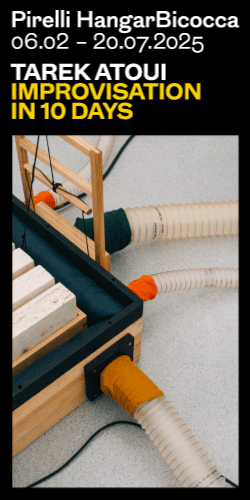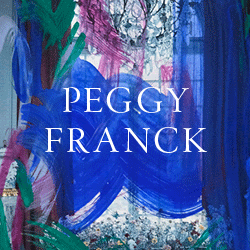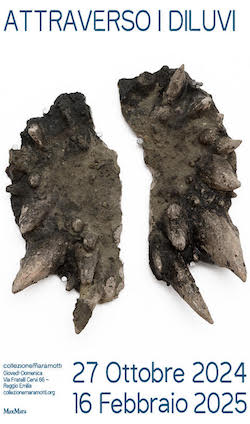
English version below —
Sabato 12 settembre nel cortile di Villa Brivio di Nova Milanese ha inaugurato il 61° Premio Internazionale Bugatti-Segantini. Questa prima tappa della kermesse annuale dedicata all’arte ha visto la premiazione e l’inaugurazione della mostra di Tomas Rajlich. Opere 1972-2018 curata dallo storico dell’arte e critico Flaminio Gualdoni, che scrive nel catalogo monografico edito per la mostra: «Dalla fine del decennio sessanta Tomas Rajlich diviene una delle figure di riferimento della vicenda pittorica. […] Pittura fondamentale, cioè rastremata ai propri modi primi, agguerritamente concentrata nell’analisi e nello scrutinio delle radici stesse del proprio consistere in quanto pittura»
Simona Squadrito: Lei è il vincitore della 61ª edizione del Premio Internazionale Bugatti-Segantini. Come ha accolto la notizia? Conosceva già questa longeva manifestazione artista italiana?
Tomas Rajlich: Sono molto onorato di aver ricevuto il Premio Internazionale Bugatti-Segantini come riconoscimento del lavoro di una vita intera, mi ha fatto molto piacere ricevere la notizia da Antonio Borghese, il gallerista della ABC-ARTE di Genova, anche se, lo ammetto, non conoscevo questa manifestazione
S.S: Nel 1969 a seguito dell’invasione sovietica della Cecoslovacchia, Paese che le ha dato i natali, si trasferì in Olanda dove ha poi vissuto per circa quarant’anni.Vuole raccontarci qualcosa di quel periodo della sua vita? E’ stato semplice lasciare la Cecoslovacchia?
T.R: Non è mai facile lasciare il proprio Paese, ma ci sono situazioni in cui è necessario farlo. Nel 1969, un anno dopo l’invasione sovietica, i Paesi Bassi furono l’ultimo paese europeo ad accettare gli immigrati provenienti dal blocco orientale. In quelle sfortunate circostanze ciò ha rappresentato la nostra fortuna. I Paesi Bassi hanno storicamente un’incredibile vicenda pittorica e sono diventati la nostra nuova patria per i successivi quattro decenni. Proprio in quegli anni l’Olanda ospitava numerosi artisti importanti come ad esempio Jan Schoonhoven e herman de vries. Qui, il mio lavoro è stato da subito capito ed è stato grazie ai loro sforzi che, solo dopo pochi mesi di lavoro alle pulizie delle petroliere nel porto di Rotterdam, ho potuto riprendere e continuare il mio percorso artistico. Sono stato assegnato alla posizione di assistente presso la Vrije Academie dell’Aia e in poco tempo sono diventato un docente.
S.S: L’italia da subito ha apprezzato la sua ricerca, sono infatti numerose le mostre che lo vedono coinvolto. Inoltre dal 2010 vive e lavora tra l’Italia e Praga. Mi sembra che si possa parlare di un interesse e di un amore reciproco. Secondo lei, perché il suo lavoro è così apprezzato in Italia e quali sono state le motivazioni che l’hanno spinta a trasferirsi in Italia?
T.R: L’Italia ha sempre avuto un ruolo importante nella mia vita. C’è stato un momento in cui abbiamo valutato la possibilità di emigrare negli Stati Uniti, New York era la capitale indiscussa delle arti (così come lo fu Parigi). Ma alla fine non siamo partiti, perché mi resi conto di non aver mai visitato l’Italia e i suoi tesori culturali. Allora, un biglietto aereo intercontinentale era significativamente più costoso e questi viaggi erano molto meno comuni rispetto a come lo sono oggi. Pensai, che se avessi scelto di vivere a New York sarebbe stato difficile tornare in Europa se non più di un paio di volte nella vita. Quindi, abbiamo deciso di rimanere nei Paesi Bassi e di iniziare a scoprire l’Italia quando possibile. Sai, l’arte d’avanguardia ha sempre avuto le sue radici nella tradizione, anche se si ribella contro di essa. Sono convinto che senza conoscere l’arte importante, quella stratificata nel corso dei secoli, come l’arte italiana ad esempio, sia impossibile sviluppare una seria pratica artistica.
Per quanto riguarda gli italiani, è chiaramente un popolo che ama le cose belle – prendi il design italiano, per esempio. Oserei ipotizzare che sia questo motivo per cui i miei quadri sono sempre stati apprezzati in Italia. Sono convinto che l’arte sia e debba sempre riguardare la bellezza.
Per rispondere all’ultima domanda, posso dirti che in quanto emigranti e per ragioni legati alla particolare situazione politica, siamo stati classificati come traditori e per questo motivo rischiavamo di scontare in Cecoslovacchia una pena detentiva. Non potevamo tornare lì e per rivedere il nostro Paese e la nostra famiglia abbiamo aspetto fino al 1989. Quando è nata nostra figlia Claudia ci è sembrata una scelta ovvia quella abitare in una seconda casa in Italia per trascorrere li le nostre vacanze.

S.S: Da qualche anno a livello internazionale è cresciuto nuovamente l’interesse per la pittura. Lo slogan più scritto e letto in questi ultimi cinque anni, non a caso è quello di “un ritorno alla pittura”. Lei ha dipinto tutta una vita, cosa le suscita questo “ritorno”? Quanto secondo lei questo rinnovato interesse alla pittura è legato al mercato e alla facilità di commerciare dipinti? Quali sono secondo lei i motivi di tanto interesse?
T.R: Come sai, la pittura è stata dichiarata morta molte volte. Questa ricorrente “fine” della pittura è sempre stata seguita dalla rinascita della pittura stessa. Negli ultimi anni, così ci fanno credere i media, stiamo ancora una volta “tornando” alla pittura, ma in verità la pittura non è mai uscita di scena. L’espressione visiva ha fatto da sempre parte della nostra natura: pensa, ad esempio alle prime pitture rupestri come quelle di Lascaux o di Altamira. Nel nostro mondo moderno, questa voglia di esprimerci visivamente ha portato con sé innumerevoli mutazioni e deformazioni che, nella loro natura kitsch e nel loro potenziale manipolativo, mi ricordano fortemente il “realismo socialista” che mi sono lasciato alle spalle emigrando. Ciò non ha nulla a che fare con la bellezza, mentre, come ci insegna la filosofia estetica, la bellezza è sempre stata dalla parte dell’arte e quindi della pittura. Queste novità del mondo dell’arte vanno spesso di pari passo con una tendenza o una moda sociale. Negli ultimi decenni questo ha significato soprattutto un nuovo tipo di pubblico dell’arte: un pubblico cresciuto in un mondo di immagini veloci come quelle dei film di successo, della televisione, dei video games e dei social media. Le nuove generazioni sono più facilmente attratte da queste espressioni visive sorprendenti, perché non hanno la pazienza di pensare all’arte, di contemplare la pittura e di lasciare che la bellezza si dispieghi nell’esperienza. Vogliono un calcio immediato, essere intrattenuti e potersi mettere in mostra. Il mercato dell’arte, come altri mercati, gioca strategicamente su queste nuove esigenze, anche perché una buona parte di questi giovani è oggi ricca. Detto questo, ci sono sempre eccezioni alla regola e sono fiducioso che una parte più “tradizionale” di fare e di pensare l’arte è qui per restare – così come la pittura. Ad Reinhardt, negli anni Cinquanta, ha scritto che “l’arte è arte e tutto il resto è tutto il resto”, questa affermazione, secondo me, riassume ancora perfettamente la situazione artistica odierna.
S.S: Lei è tra i membri fondatori di Klub Konkretistů, un gruppo avanguardista praghese nato nel 1967 e che si pone sulla scia delle neoavanguardie europee nate qualche anno prima come Azimut (1959) in Italia, ZERO (1960) in Germania e Nul-Groep (1961) in Olanda. Ci sono stati degli scambi tra il vostro gruppo e gli altri tre sopra citati? Quali erano le vostre peculiarità distintive rispetto ai sopra citati colleghi europei?
T.R: Negli anni ’60, il totale isolamento della Cecoslovacchia dal mondo occidentale si era un po’ attenuato, tuttavia, non eravamo a conoscenza dei recenti avvenimenti sulla scena artistica come Azimut, ZERO o Nul, ma, sapevamo anche noi di dover fare qualcosa. Eravamo tre giovani artisti, più un giovane teorico che lavoravano sulla vena geometrica. Si è trattato di un’azione piuttosto ingenua, basata sulla tradizione costruttivista, ciò nonostante ha portato con sé un vantaggio significativo: ci ha permesso di entrare in contatto con i artisti europei che la pensavano allo stesso modo. Questi artisti ci hanno spedito via posta disegni e stampe da includere nelle nostre mostre collettive. Abbiamo ricevuto, per farti qualche esempio, le opere di: Alviani, Colombo, Munari, Carino, Uncini, dall’Italia, poi di Soto, Morellet, Riley e herman de vries tra l’altro.
S.S: Il critico d’arte Alberto Zanchetta scrive che “Vita e Forma” sono due concetti che rispecchiano la filosofia delle sue opere, sono esempi di quella ricerca che viene anche indicata con il termine “pittura-pittura”. Zanchetta evidenzia la sua coerenza stilistica e sostiene che se lei non fosse stato un pittore sarebbe potuto essere uno scrittore che lavora sempre allo stesso romanzo, aggiungendo di volta un volta un nuovo capitolo. Zanchetta insiste sul fatto che la parola fine non arriverà mai. Si ritrova in questa lettura della sua ricerca?
T.R: Credo che ci sia del vero in ciò che ha scritto Alberto Zanchetta. Sembra impossibile trovare il “Santo Graal”, ma ciò non significa che dovremmo smettere di cercarlo.
SS: Il prossimo ottobre verrà inaugurata presso la galleria ABC-ARTE di Genova una mostra che presenterà al pubblico un corpus di sue opere realizzate tra il 1976 e il 1979, conosciute come Black Paintings. Cosa l’ha spinta a ricercare per quattro anni in maniera quasi ossessiva le potenzialità del colore nero?
T.R: I miei dipinti degli anni ’60 e dei primi anni ’70 erano bianchi, poi grigi, diventando sempre più scuri a causa della stratificazione della pittura sulla griglia. Questa ricerca è emersa nei dipinti quasi totalmente neri con resti della griglia visibili solo attorno ai bordi. I miei ultimi dipinti di quel periodo sono quadrati neri con una superficie liscia eseguiti con lo smalto lucido, dove la griglia è totalmente invisibile. Questi lavori segnano la fine del mio periodo di “non colore” e poiché i colori esistono e possono essere dipinti, ci sono ancora oggi.



Interview with Tomas Rajlich
Simona Squadrito: You are the winner of the 61st edition of the Bugatti – Segantini International Prize. How did you receive the news of having won this Prize? Did you already know this long-lived Italian artistic event?
Tomas Rajlich: I am very honored to have been awarded the Bugatti-Segantini International Prize for my lifetime work; of course, I was very pleased to receive this news through Antonio Borghese of ABC-Gallery in Genoa. Although, I must admit, I was not really aware of it previously.
S.S: In 1969, following the Soviet invasion of Czechoslovakia, your birth country, you decided to move to the Netherlands and lived there for about thirty years. Would you like to tell us something about that period of your life? Was it easy to leave Czechoslovakia?
T.R: It’s never easy to leave one’s native country, but there are situations when it’s necessary. In 1969, a year after the Soviet Invasion, the Netherlands was the last country to accept immigrants from the Eastern Bloc. That was our luck in those unlucky circumstances. The Netherlands, which has an amazing history in painting, became our new homeland for the following four decades. Also in those years, the Netherlands was home to numerous important artists like Jan Schoonhoven and herman de vries. They immediately understood my work; And it was thanks to their efforts that, after only a few months of cleaning oil tankers in the Rotterdam harbor, I was able to continue on my artistic path. I was granted to position of assistant at the Vrije Academie in The Hague and was soon promoted to lecturer.
S.S: Italy is a country that immediately appreciated his research, in fact there are numerous exhibitions in which your works are involved. In addition, since 2010 you have lived and worked between Italy and Prague.
It seems to me that it is possible to speak of mutual interest and love. In your opinion, why is your work so appreciated in Italy? What were the reasons that led you to move to Italy?
T.R: Italy has always played an important role in my life. At one point, early on, we were considering to emigrate to the United States, as New York was the undisputed capital of the arts (as Paris had been before). We did not, because I realized I had never seen Italy and its cultural treasures. Back then, an intercontinental airplane ticket was significantly more expensive and such trips much less common. I decided that we might not be able to return to Europe more than a few times only in our lifetime, should we live in New York. So, we decided to stay in the Netherlands and start discovering Italy whenever possible. You know, avantgarde art has always had its roots in tradition, even if it might rebel against it. Therefore, I am convinced that without knowing important art throughout the ages such as Italian art, it is impossible to develop a serious artistic practice. As to the Italians, it is clearly a nation that loves beautiful things – take Italian design, for example. I dare speculate it is because of this, that my paintings have always been appreciated in Italy. I am convinced art is and should always be also about beauty. To answer the last part of your question, as emigrants for reasons of the political situation we were classified as traitors and charged with a prison sentence in Czechoslovakia. We could not return there to see the country or our family until 1989. So, once our daughter Claudia was born, it seemed like an obvious choice to create a second home in Italy to spend our vacations instead.

S.S: In the last few years, interest in painting has grown again internationally. The slogan most written and read is that of “a return to painting”. You have been painting all your life, what does this “return” inspire you? In your opinion, how much do you think this renewed interest in painting is linked to the market and the ease of selling paintings? Which do you think are the reasons of such interest?
T.R: As you know, painting has been proclaimed dead many times. These “ends” of painting were always followed by some kind of revival of painting. Over the past years, to believe the media, we are once more “returning” to painting. The fact is that painting has never left the scene. Visual expression is part of our human nature – think of the earliest cave paintings like Lascaux or Altamira, for example. In our modern world, this urge to express ourselves visually has brought along innumerable mutations and deformations that, in their kitschy nature and manipulative potential, strongly remind of “Socialistic Realism.” which I left behind when emigrating. These have nothing to do with beauty, while, as the philosophy of aesthetics teaches us, beauty has always been part of art and hence of painting. It are these new additions to the artworld that often go hand in hand with a societal tendency or fashion. In recent decades, this has meant a new kind of art public, raised in a world of fast images like blockbuster movies, television, computer games, and social media. It is these recent generations that are easily attracted to such kinds of striking visual expressions. They do not have the patience for thinking about art, contemplating painting, and letting beauty unfold itself in the experience. They desire an immediate kick, to be entertained and to be able to show off. The art market, like other markets, strategically plays to these needs, as a good part of these younger individuals are todays wealthy.
This said, there are always exceptions to the rule and I am confident that the more “traditional” kind of artworld is here to stay – and so is painting. Ad Reinhardt wrote in the fifties that “art is art and everything else is everything else.” It still perfectly summarizes the situation on the art scene today, in my opinion.
S.S: You are one of the founding members of Klub Konkretistů, an avant-garde group from Prague, born in 1967 that follows the wake of the European neo-avant-gardes born a few years earlier as Azimut (1959) in Italy, ZERO (1960) in Germany and in the Dutch Nul Group ( 1961) in the Netherlands. Were there any exchanges or mutual influence among your group and the other three mentioned above? What were the distinctive features of your group compared to the aforementioned European groups?
T.R: In the 1960s, the total isolation of Czechoslovakia from the Western world eased up a bit. Still, we were not aware of recent happenings on the art scene like Azimut, ZERO or Nul. What we did know was that we needed to do something. We were three young artists working in the geometric vein and one theoretician, and together we founded the Klub Konkretistů. It was a rather naïve action, based on the Constructivist tradition. Yet, it brought along one significant advantage: It allowed us to get in touch with likeminded young artists abroad. They sent us works by mail – drawing and prints – to include in our group shows. These were artists like Alviani, Colombo, Munari, Carino and Uncini from Italy, and Soto, Morellet, Riley, and herman de vries, amongst others.
S.S: The art critic Alberto Zanchetta writes that “Life and Form” are two concepts that best reflect the philosophy of your works, they are examples of the research that is also referred to with the term “painting-painting”. Zanchetta highlights your stylistic coherence and furthermore argues that if you had not been a painter you could have been a writer who has always worked on the same novel, adding a new chapter each time, aware, Zanchetta writes, of the fact that the final word it will never arrive. Do you see yourself in this assessment of your research? Would you like to add some comments?
T.R: I guess there is some truth to what Alberto Zanchetta wrote. It seems impossible to find the “holy grail,” but that doesn’t mean we should stop searching.
S.S: Next October an exhibition will be inaugurated at the ABC-ARTE gallery in Genoa that will present to the public a corpus of your works created between 1976 and 1979, known as Black Paintings. What drove you to search almost obsessively to explore the potential of black for four years?
T.R: My paintings from the 1960s and early 1970s where white, then gray, becoming ever darker by way of the layering of paint over the grid. This quest issued in paintings almost totally black with remainders of the grid visible solely around the edges. My very last paintings from that period are black squares with a smooth surface executed in shiny enamel; The grid is totally invisible. These marked the end of my “non-color” period; And because colors exist and can be painted with, I am still at it today.












